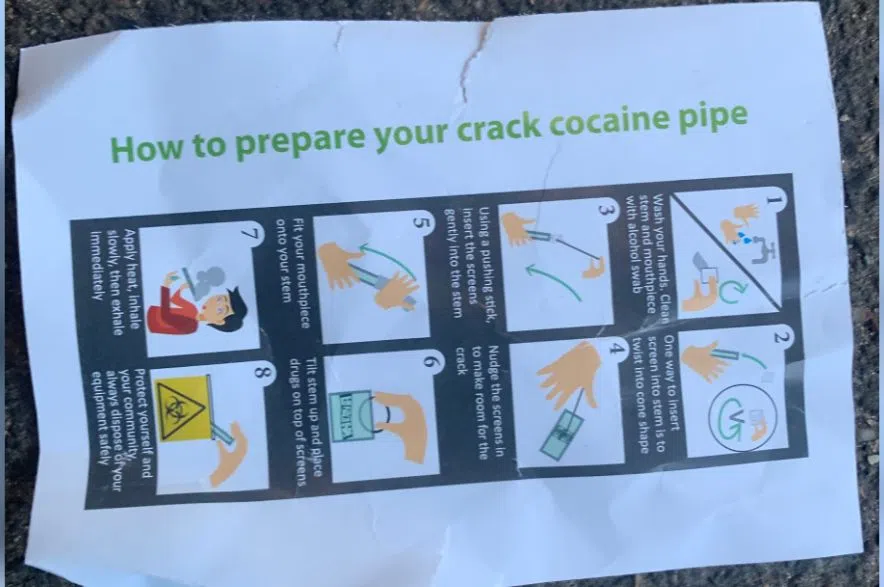The Saskatchewan government has been taking steps towards addictions recovery action instead of harm reduction efforts — a move being applauded by some addictions experts.
Last week, an announcement from the province shared it would no longer be providing meth and crack pipes or instructions for illicit drug use in Saskatchewan.
Dr. Carson McPherson has been collaborating with the Government of Saskatchewan and supporting the Alberta government through his company, ROSC Solutions Group, on the topic of recovery-oriented systems of care (ROSC).
He leads the team that recently developed the recommendations report for the Saskatchewan government outlining the transition from the province’s current addiction care system to a recovery-oriented system of care and currently is working on initial implementation plans for that process.
With the Alberta government, McPherson’s company has been the leading organization in support of the government transitioning its own system of care to ROSC.
The system shift focuses on recovery rather than simple harm reduction for people using and addicted to drugs in the form of a connected continuum of care.
McPherson said ROSC moves away from shorter, 28-day programs that expect patients to receive treatment, heal, and leave with the ability to self-sustain their transition upon departure. Instead, the system looks to connect care providers with seamless communication of client information to see individuals transition between care options, taking their individual context into consideration.
According to McPherson — a product of Shaunavon — the emphasis is on wellness for any person, not just on the supply and drug side of the issue.
“It’s a focus on demand reduction and the factors and forces in someone’s life that are going to lead to sustainable offset and return to positive citizenry,” McPherson told the Evan Bray Show.
The move away from stricter, biomedical approaches to treating addictions moves towards recovery in a more social and spiritual way. McPherson emphasized family, community and workplace systems of support as aids to recovery, as well as the exploration of how services can expand beyond brick and mortar into rural and remote Saskatchewan communities.
McPherson said one key aspect is an integrated chronic approach for chronic disorders.
“Traditionally, in addictions we’ve been faced with this series of high-acuity, short-term episodes of care for something that we know is a chronic approach,” he said, noting that treating addiction like a disease with longer, ongoing care can lead to more positive outcomes similar to those for conditions like heart disease and cancers.
That doesn’t mean harm reduction has no place in the ROSC system.
“This is not a philosophical argument against harm reduction. It’s saying that we’re going to take a methodical approach to how these interventions fit in that continuum and it’s going to be a full continuum,” McPherson said.
The expert explained the importance of making sure all interventions along that continuum, whether harm reductionist or not, are implemented and available in a way to best support the needs of the individual, the community, the province and health and wellbeing, leading to a sustainable outcome.
However, McPherson thinks people in Saskatchewan are taking a step back in the hopes of tackling the issue of addiction methodically.
The importance of harm reduction is to minimize harm. McPherson acknowledged that one-to-one needle exchanges are well-known to reduce transmission, but he said there has been tremendous success too in not normalizing the behaviour of drug use.
He noted that provinces like British Columbia have been seeing strategies employed for a number of years that focus on reducing harm to people using illicit drugs. However, he told Bray the evidence for success through these efforts is “quite low quality,” with the reductions in mortality and related harms discussed not being realized.
A recovery-oriented system of care in place to guide people receiving care from initial intervention into a pro-social quality of life can prevent overinvestment in one area while governments work to help an entire population, McPherson noted.
McPherson said it’s important to toe the fine line between harm reduction efforts and harm facilitation too. Rather than shifting use from intravenous to inhalation, the CEO said he sees the government signaling a transition from drug use to recovery, which McPherson said is positive.
“The reality is all of these things are needed,” McPherson noted.
When asked about secure treatment as an addictions response, McPherson acknowledged the discussion happening around the topic in Canada is significant right now, though not new or novel. He said the concept has had a place in mental health systems for years, but depends on the details of the treatment.
Focusing on Saskatchewan, McPherson told Bray that when governments make commitments like the Saskatchewan government has to build out a provincial infrastructure for recovery, the hope is to avoid secure treatment by slowing down the momentum of addictions and allowing for earlier and younger intervention.
While not professing to have any singular solution, McPherson said a key part of any answer to the problem of addictions is the coming together of all sides to guide multiple pathways to recovery.
“The sooner we can come together and have some reasonable understanding of how this would look, the better the individuals who need the services will be served,” McPherson said.











